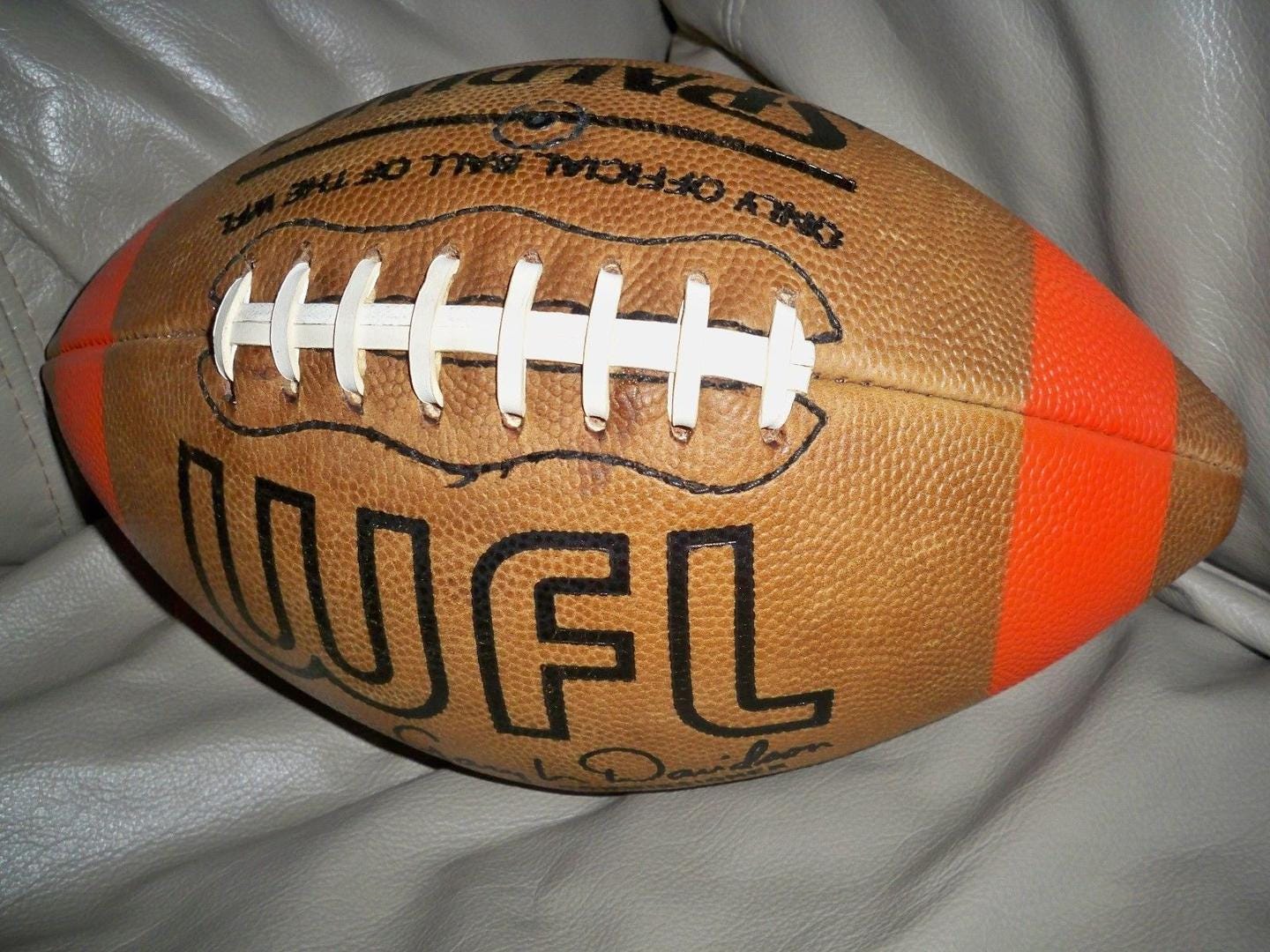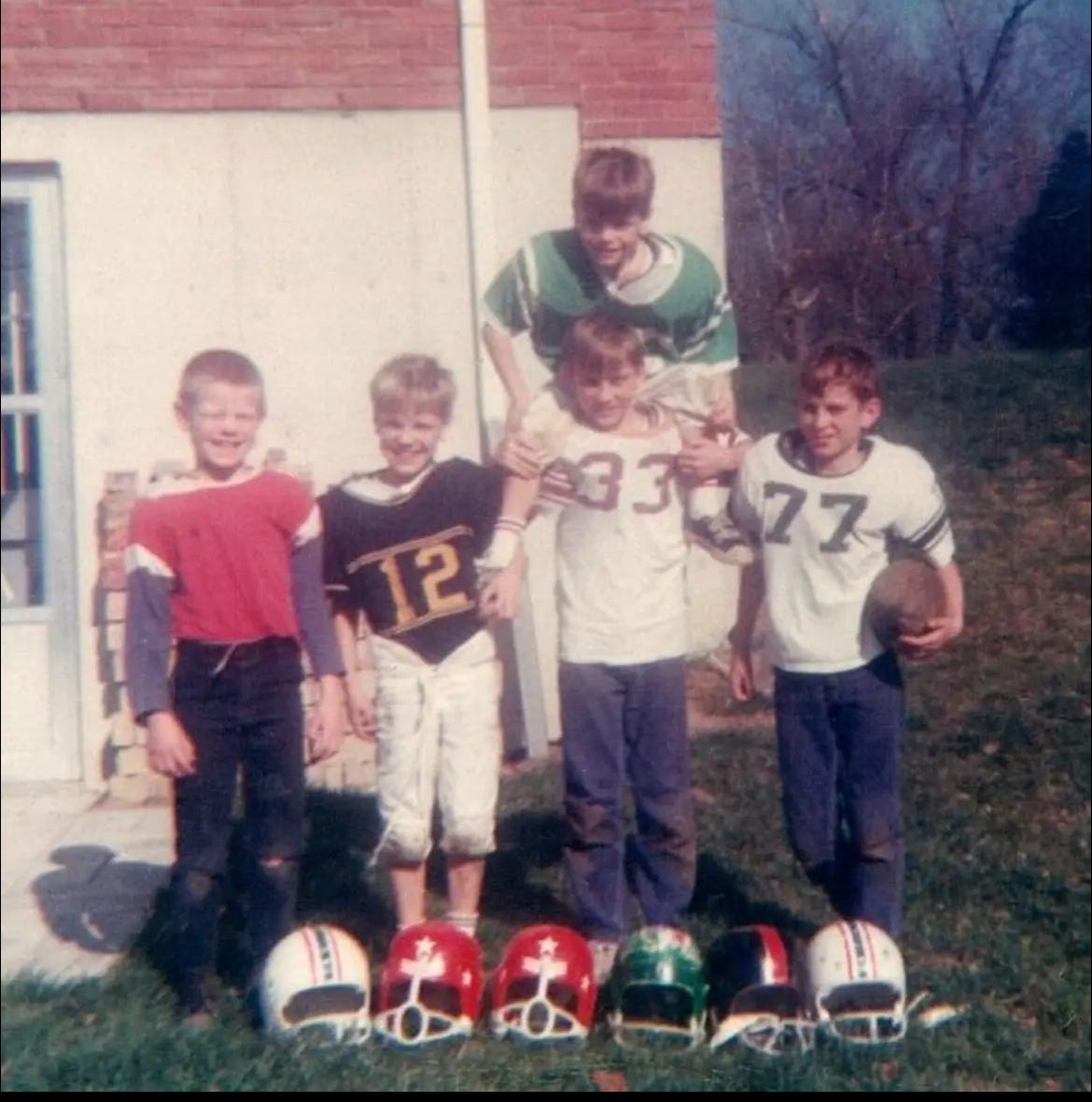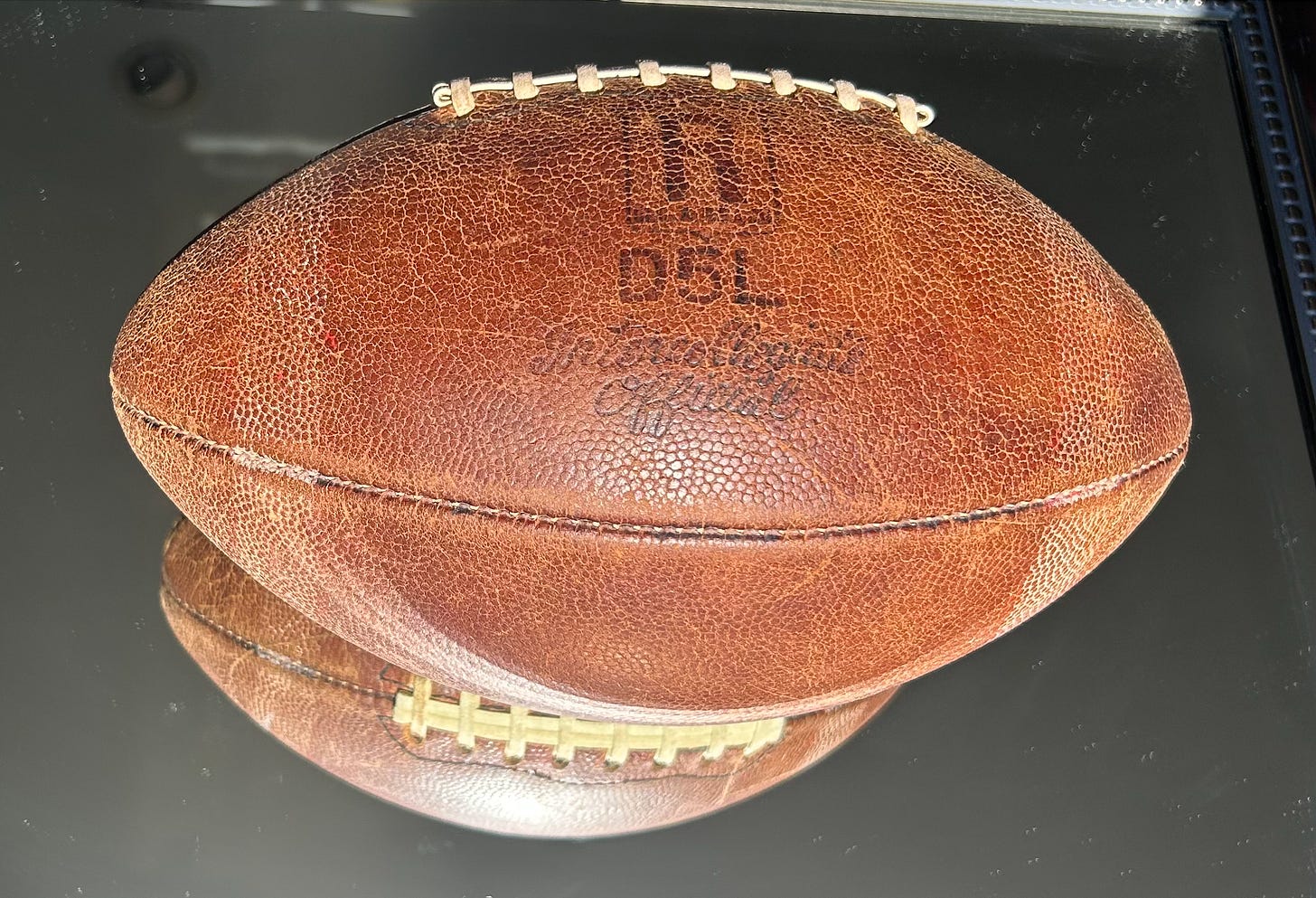Two-Lace Football Prototypes
I published A History of the Football last year, which describes how the football evolved in size, shape, construction, coloring, striping, and attempts to make the ball easier to grip. The latter primarily came through adjustments to the tanning and dimpling processes.
I recently learned about a prototype ball from the late 1960s to mid-1970s that is not included in the book. It is not believed to have been used in a game other than in a backyard. What makes this ball distinct? The typical football has one set of laces, while this football has two, each sitting 180° from the other.
I'll jump ahead to tell you that when the World Football League introduced itself to the world in February 1974, it showed several prototype footballs to the press. Gary Danielson, the WFL Commissioner, not the WFL quarterback and current broadcaster, solicited designs from several manufacturers who came back with balls of varying stripes and colors, but one prototype was truly different. Spalding sent them a ball with two sets of laces. It was a gimmick, but there were those who thought the double-laced ball solved a football problem that still exists today.
Think about it. When quarterbacks, punters, and holders receive the snap, they catch the ball and quickly rotate it in their hands to either find or avoid the laces. We've all done it thousands of times playing catch, and while the rotation only takes moments, moments matter in football.
The standard football has laces running along one of the four seams that connect the ball's four panels. When a quarterback catches the ball in the shotgun or spread formation, there is a one-in-four-ish chance the laces are where they need to be. If the laces are not in the right place, the quarterback needs to rotate the ball. Adding a second set of laces would cut the quarterback's rotation time in half in the long run.
The WFL had teams try the assorted prototypes. Some complained that the paint patterns on certain balls interfered with the quarterback's grip. They also had teams try the two-lace ball, and while we don't know what the quarterbacks, punters, and holders thought of it, receivers complained that the second set of laces tore up their hands. Whatever the reason, the WFL did not adopt the two-lace ball, choosing instead the ball shown below.

Whether the two-lace WFL ball or balls still exists is unknown, but it turns out that another manufacturer had the same idea a few years earlier, and that ball is still around. Here it is:
This ball is based on the Reach Model D5L, so the Hutch Reach Co. of Cincinnati created it. The story goes that Will Hundemer, a multi-sport letter winner at the University of Cincinnati in the early 1950s and a long-time high school football coach in the area, worked summers running a country club swim program. He befriended the president of Hutch Reach there, and the two soon arranged for Hundemer to receive excess stock, returns, or prototypes the company no longer needed. Hundemer, in turn, distributed them to underprivileged kids in the area. A few of those products went to kids in Hundemer's neighborhood, including a two-lace ball that ended up in the hands of Tim Hegge, who played with it in the backyard with his friends. That makes it a game-used ball, though not a league most would recognize.
The ball ended up in the attic until recently, when Tim pulled it out and sent it to Paul Cunningham at Leather Head Sports for light reconditioning. Leather Head Sports provides football repair services, but its main products are handcrafted reproduction footballs, baseballs, basketballs and the like.
The post reconditioned ball now looks like this:
It may not have occurred to you before, but photographing a football so you can see the laces on both sides of the ball is challenging, at least, until you place the ball on a mirror.
So, what is the point of this story?
First, the story is interesting by itself, since it covers a prototype football most have never considered. Second, we're trying to find members of Cincinnati's football team during the late 1960s to see if anyone recalls testing the prototype ball. Homer Rice coached the team in 1966 and 1967, and Ray Callahan did so from 1969 to 1972. During that time, Cincinnati players who likely would have tested the two-lace ball included:
Greg Cook, starting quarterback in 1967 and 1968, and the AFL Rookie of the Year in 1969 with the Bengals.
Jim O'Brien, a wide receiver and kicker for Cincinnati through 1969. As an NFL rookie, he booted the Colts' game-winning field goal with 5 seconds left on the clock in Super Bowl V.
Jim Ousley, starting quarterback in 1969, who played in Canada's ORFU and for Portland in the WFL.
While the two-lace balls of the late 1960s and early 1970s did not catch on, that was not the end of the story. The same idea for a two-lace football came to New Jersey's Paul J. Gondolfo at some point, and the idea so impressed his wife that she encouraged him to patent the invention. After she passed away, he honored her suggestion for filing for and receiving a patent for a "two-seam" football.

Notably, the patent application listed a primary benefit of the ball being its halving the time required for quarterbacks to find the laces on the ball.
So, if you know of other two-lace footballs that are out there, or have connections with Cincinnati players of the late 1960s or WFL players in 1974 who may have tested the ball, please forward the story to them.
The History of the Football covers everything you need to know about the football’s evolution. Available now on Amazon ($18.99 print, $9.99 Kindle or audiobook, and $0.00 for Kindle Unlimited subscribers)
Click Support Football Archaeology for options to support this site beyond a free subscription.









I had no idea about this. What an cool story. I kind of like the ball.
How long did the WFL last for?